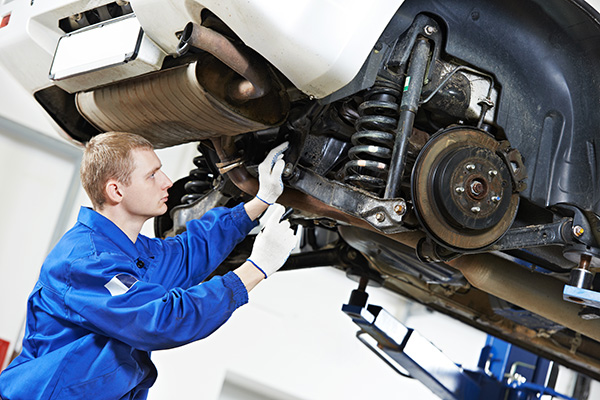
Brake issues don’t always announce themselves with warning lights or obvious failures. In fact, many drivers continue on worn or unevenly performing brakes without realizing they’re compromising their safety. That’s why regular brake inspections are so important—especially if you drive frequently, live in a traffic-heavy area like Garden Grove, CA, or tend to carry extra weight in your vehicle.
But how often should you get your brakes checked or serviced? The answer depends on how and where you drive, but there are general guidelines that help prevent surprises and keep your braking system in top shape.
Regular Brake Inspections
You might think your brakes are working just fine because your car still stops. But brake performance is often affected gradually. As pads wear down, stopping distances increase, and you may not notice until it becomes a real problem.
A thorough brake inspection can reveal:
- Uneven brake pad wear
- Rotor warping or scoring
- Low or contaminated brake fluid
- Caliper issues or sticking
- Hidden hardware failures
Catching any of these early can prevent more expensive repairs and reduce the risk of brake failure during sudden stops or emergencies.
The General Rule
For most vehicles, a good rule of thumb is to have your brakes inspected every 6,000 miles or at least once a year. This often lines up with tire rotations or oil changes, making it easy to remember.
That said, certain driving habits call for more frequent inspections:
- Daily stop-and-go traffic
- Hilly or mountainous terrain
- Towing trailers or heavy loads
- High-speed highway commutes with abrupt stops
In these cases, brakes wear out faster—and early detection becomes even more critical.
When Is Full Brake Service Necessary
A brake inspection tells you what condition your system is in, but brake service goes a step further—it usually involves replacing worn pads, resurfacing or replacing rotors, inspecting calipers, and flushing brake fluid if needed.
You should schedule full service when:
- Your brake pads are less than 4mm thick
- You hear consistent squealing, grinding, or clunking
- Your steering wheel vibrates when braking
- The brake pedal feels soft or spongy
- Your car pulls to one side during stops
- It’s been more than 2 years since your last service
Even if none of these symptoms are present, replacing brake pads every 30,000 to 70,000 miles is typical, depending on your car and driving habits.
Don’t Forget About Brake Fluid
Brake fluid tends to fly under the radar, but it’s a critical part of your braking system. Over time, it absorbs moisture, which reduces its effectiveness and can cause corrosion inside brake lines and calipers.
Most manufacturers recommend a brake fluid flush every 2–3 years. Our technicians can test your fluid during an inspection and let you know if it’s time for a change.
Why Waiting Costs More in the Long Run
Brake pads are designed to wear out—but if they get too thin, the metal backing grinds against your rotors. This can quickly damage the rotors and lead to higher repair bills. And if the calipers overextend or seize, that’s another layer of cost.
What could’ve been a simple pad replacement turns into rotor machining or replacement, new calipers, and extra labor. That’s why consistent inspections are a smart investment, even if nothing seems wrong.
Whether your brakes are making noise or you just want peace of mind, schedule an inspection with the experts at Morrison Tire in Garden Grove, CA. We’ll check your pads, rotors, calipers, fluid, and more—so you can drive with confidence, knowing your brakes will perform when you need them most.